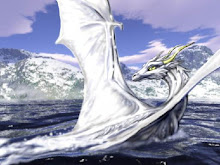In Western culture, the dragon developed a very different persona, which many aficionados claim is misinterpretation of the tales in which their stories are told. Where Eastern dragons are perceived as good and benevolent, western dragons are all fire, and flinging their tails about, and biting heads off. In reality, if you read a broad range of literature from both hemispheres, you’ll find that eastern dragons sometimes took a notion to be bad characters, and in the west, there are dragons whose whole existence was to serve and protect a kingdom, or prince, and they display the most sterling qualities of loyalty and sacrifice.
Part of the reason it is so hard to define what constitutes a dragon, is the wide variance in their physical images. In Eastern culture the dragon started out as an elongated, almost serpentine creature, usually, but not always showing four shortened legs, and a spaded tail. They were covered in scales, had a crest on the head, and were brightly colored in many hues. In Western culture, the traditional image of the dragon is of an almost reptilian animal, usually green, with wings like a bat, and breathing fire. Some also have feathers. Which is likely what leads to confusing dragons with gryphons (leonine in the hind quarters and raptor-like in the front quarters) and the phoenix (a mythical bird).
Monday, November 3, 2008
Subscribe to:
Post Comments (Atom)

No comments:
Post a Comment